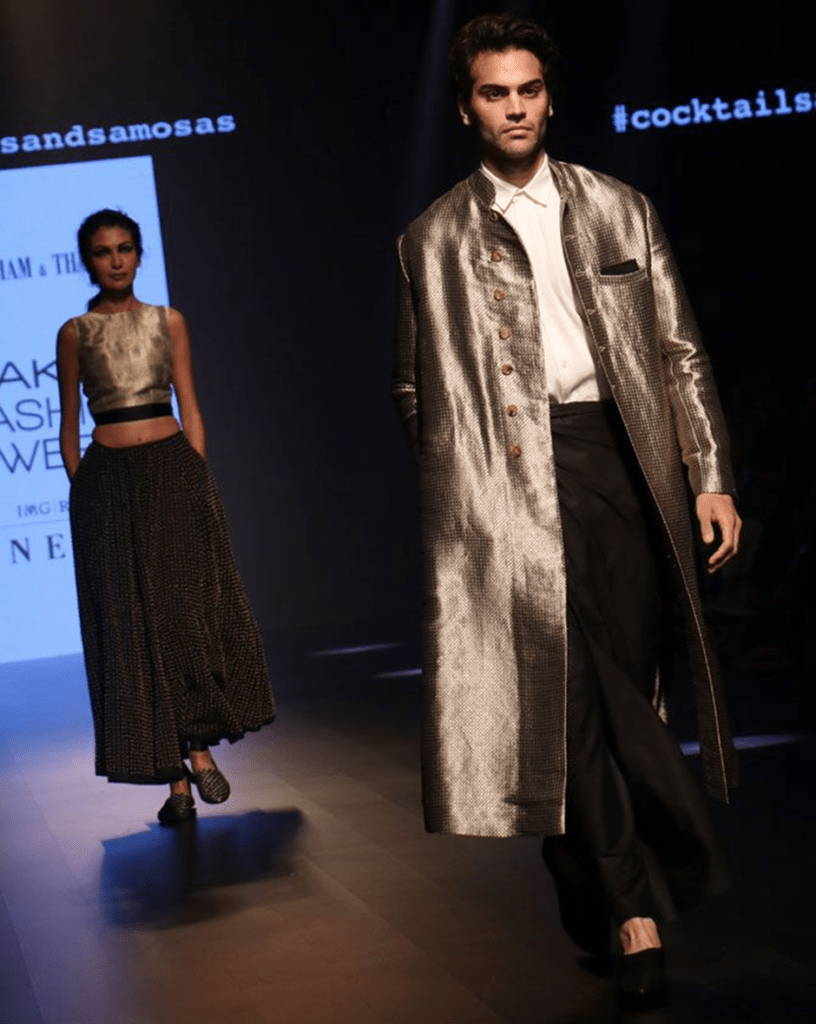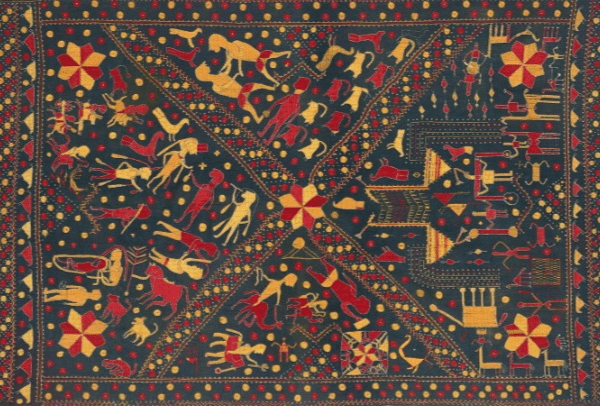All of us tend to get awestruck with the scenic beauty of Sikkim. It attracts our attention so much that we are unable to appreciate the praiseworthy attires of the diverse communities inhabiting the brother of the seven north eastern sisters .The traditional dresses of the various tribal communities of Sikkim represent the interesting fashion sensibilities of the entire population.

Innovation in the Traditional Outfits
The indigenous fashion in India enhances the interest of the fashion conscious population. The fashion sensibility of each state is majorly influenced by the culture and the climatic conditions of the region. The local craftsmen of the various states infuse interesting elements within the traditional outfits of that state. Their creativity leads to noteworthy transformations in the native costumes worn by the people of that region across generations.
The natural landscape of the state garners a lot of attention of the people. The traditional dresses of each ethnic group provide a remarkable opportunity for everyone to explore the interesting elements of fashion present in the region.
The Privilege of the Elite Class
The history of this region suggests that the traditional outfits of the diverse ethnic groups were quite popular in the royal family. Since, they depicted the authentic cultural heritage of the region, only the royal family had the privilege to wear them. Therefore, they also symbolised a higher social status.
Shuruval and Pharia : A Colourful Pick
Nepalis is a major community residing in Sikkim. They constitute a major percentage of population of the state. Their costume depicts a great deal about the culture and the beauty of the region.The traditional attire of the males in the Nepalese community is Shuruval. Shuruval is a churidar like bottomwear which worn with a shirt called Daura. On the other hand, the women of the Nepalese community wear Pharia which is available in diverse colour palettes. Another garment which is worn on the upper body is known as Hembari.It is quite attractive due to its elegant prints. It is paired with a majetro shawl.
Bakhu : An Elegant Attire
One of the most popular dress from Sikkim is Bakhu. It is worn by the Bhutia tribal community. It was traditionally worn by the ruling community of Namgyal dynasty. Bakhu is a cloak style dress which is tied on the neck and fitted through a belt around the waist. It is basically a type of loose garment.Women pair it with a full sleeved silk blouse called Honju. A jacket known as Kushen is worn from the outside. The married women from the community wear Bakhu along with Pangen. Pangen is an apron with multiple colors and is worn on the frontal part upon the Bakhu.



Dumvum : The Conventional Choice
Another traditional costume of Sikkim is Dumvum. It is worn by the Lepcha community. The length of this outfit extends till ankle length. All the females pair it with a loose-fit blouse called tago which is of a contrasting colour. It is worn with Nyamrek (type of belt),Taro(cap) and Gorey ( Scarf).The males of the Lepcha tribe wear thokra dum. Thokra Dum consists of Yenthatse ( Lepcha Shirt) , a white pajama and an cap which is embroidered in nature. The shorter length of the Pajamas indicate the marshy nature of the land in which the Lepchas reside. They wear it with cone shaped bamboo hats,straws and leaves. The males of the Lepcha tribe wear thokra dum. Thokra Dum consists of Yenthatse ( Lepcha Shirt) , a white pajama and an cap which is embroidered in nature. The shorter length of the Pajamas indicate the marshy nature of the land in which the Lepchas reside. They wear it with cone shaped bamboo hats,straws and leaves.
Splendid transformation of Bakhu in the contemporary times
Bakhu has also been redefined as per the preferences of the modern society by the fashion designers. A renowned fashion label P.E.L.L.A by Priyanka Lama included an interesting interpretation within the silhouette of Bakhu. This brand came up with a complete collection in 2017 which drew its inspiration from Lachenpas and Lachungpas community of Sikkim. All the garments of this collection were made from handwoven Eri which is derived from the discarded cocoons which is a nonviolent method of silk extraction. It has introduced a newer version of Bakhu wherein it has constructed the collar, sleeve, back and front garment from just a fabric block which is usually used as an over garment by the natives of the region. The philosophy of this brand is based upon Wabi- Sabi philosophy of Japan. This actually ensures simple designs which are majorly made up of natural materials which complements the idea of sustainability to a larger extent.
Indian fashion industry has undergone a major transformation in recent times due to the unforeseen pandemic situation. This has paved the way for a great deal of innovation from the experts in the field. Lakme fashion week initiated an amazing format for the display of the garments in October 2020. Under the Nexa Digital couture initiative, a group of six eminent fashion designers prepared sketches which were redefined into a 3D render of the garments. The virtual representation was aimed at providing the real life experience to the customers. All the designs were made available on the specified platforms of the respective designers. David abraham and Rakesh thakore came up with a unique interpretation of the Sikkimese Bakhu in the form of wrap dresses within this initiative.Both of them firmly believe in the huge extent of design possibilities that are present in the vibrant culture of India.


Abraham and Thakore launched a collection titled cocktails and samosas in 2018 which included loungewear. Moreover, its interesting aspect was an Indian touch in each garment. It also included wrap dresses by reconceptualising the silhouette and design of a Sikkimese Bakhu and a Sari. They used banarasi brocades in creating those wrap dresses. In fact, all the textiles used in the entire collection were sourced from Varanasi. This provided a luxurious touch along with the lustrous appearance to each garment of the whole collection. Another distinguishing feature was the use of only black and gold colour in each outfit. Since, black represents elegance and gold symbolises luxury and sophistication, the usage of these colours complement with the core values of the designer label.

All these recent developments testify the significance of Sikkim in transforming the fashion scenario of India. You all must have realised by now the pivotal role of the state in the field of fashion. The next time you plan your visit to the north eastern region, don’t miss the chance to get yourself clicked in these beautiful traditional outfits of the state for having a fun filled experience!!




